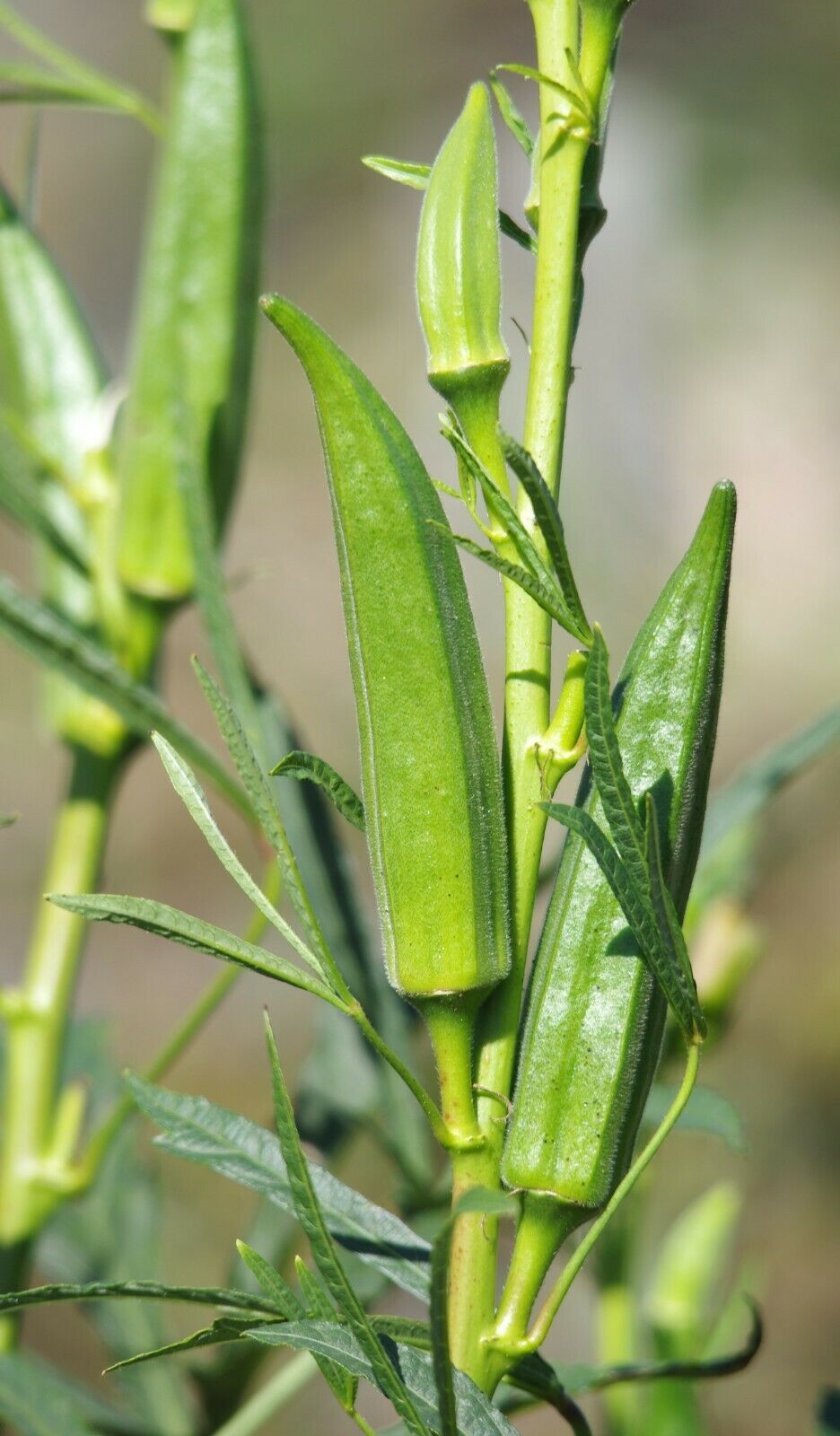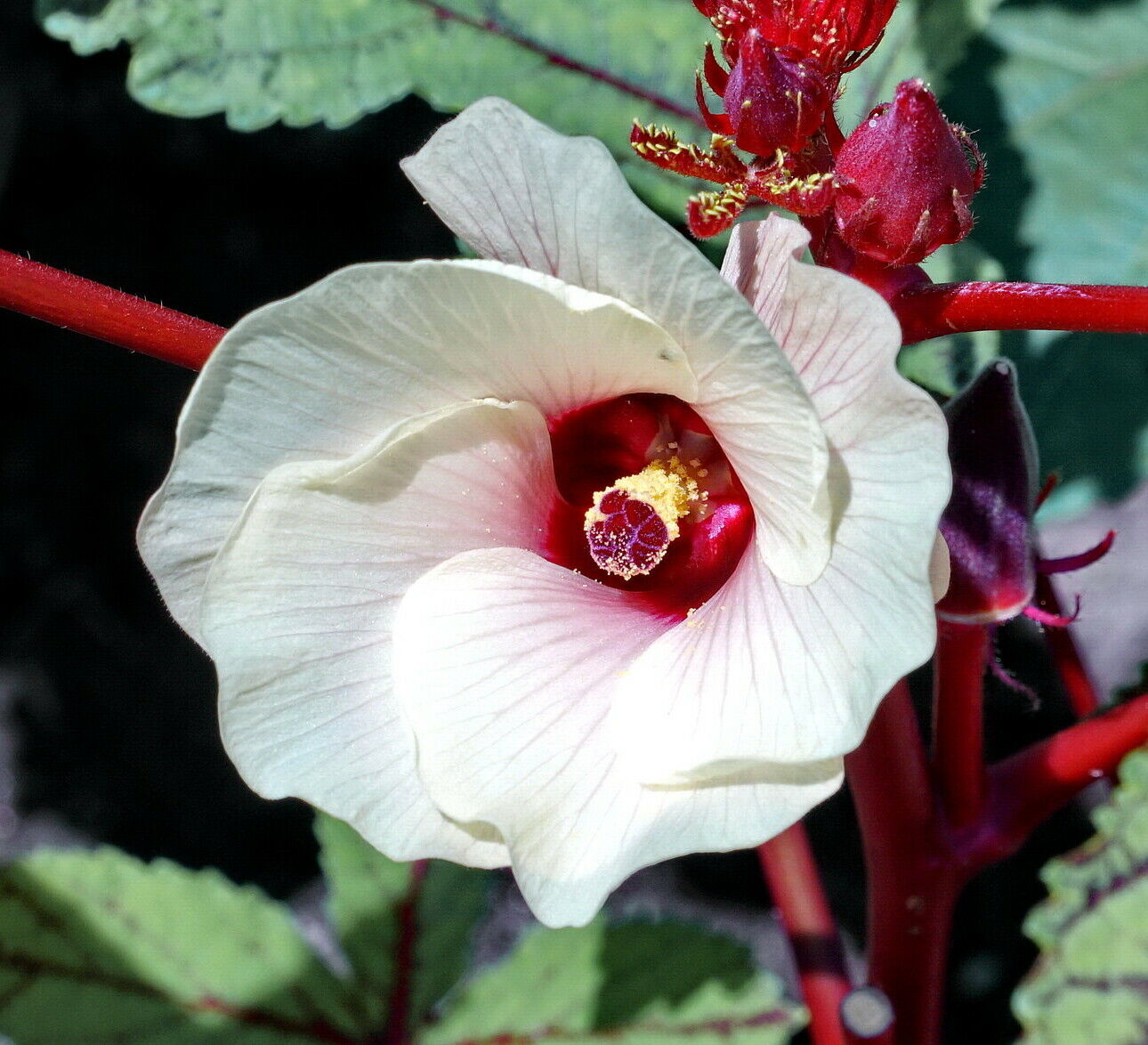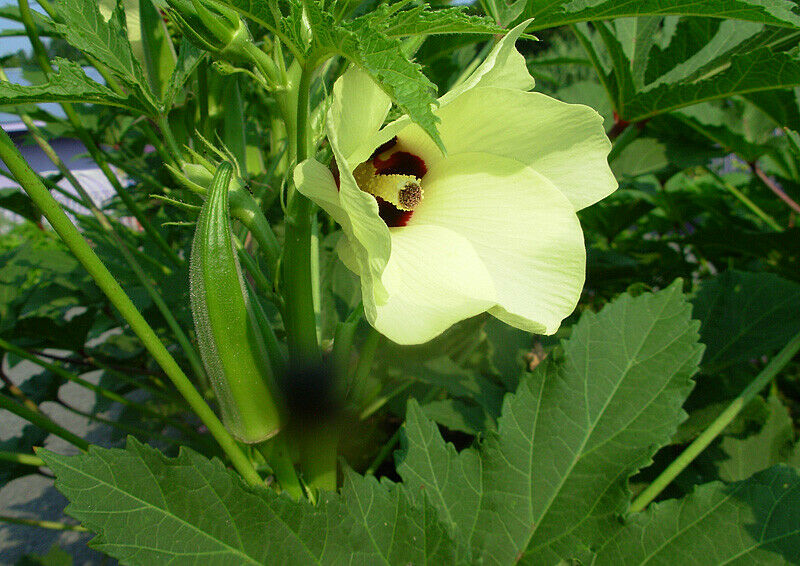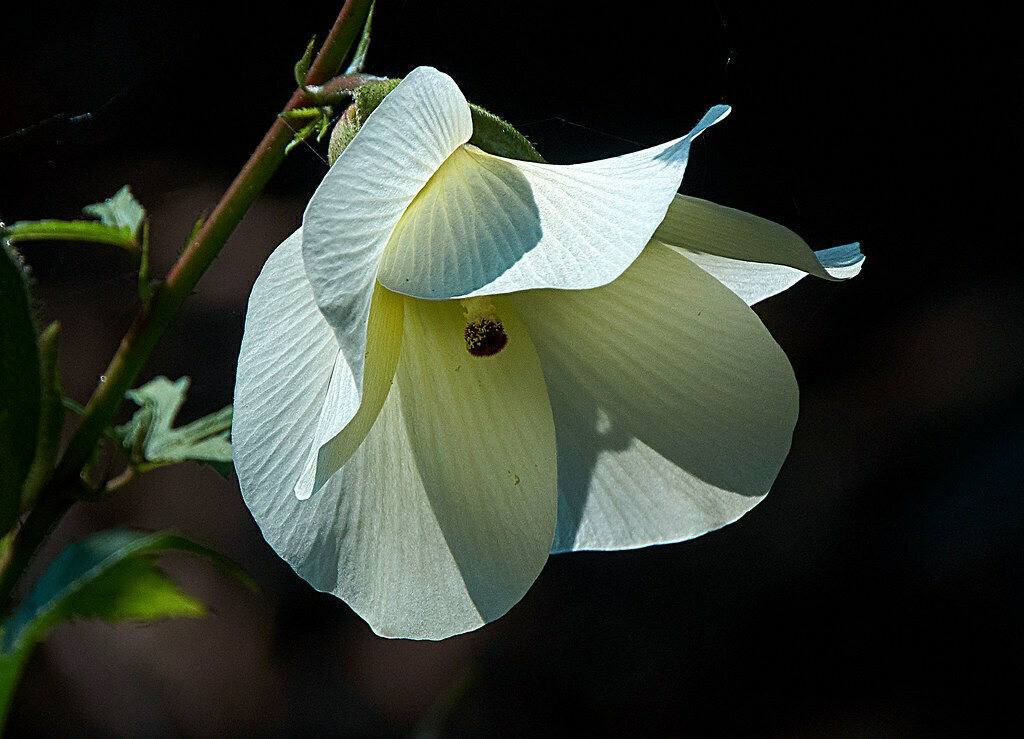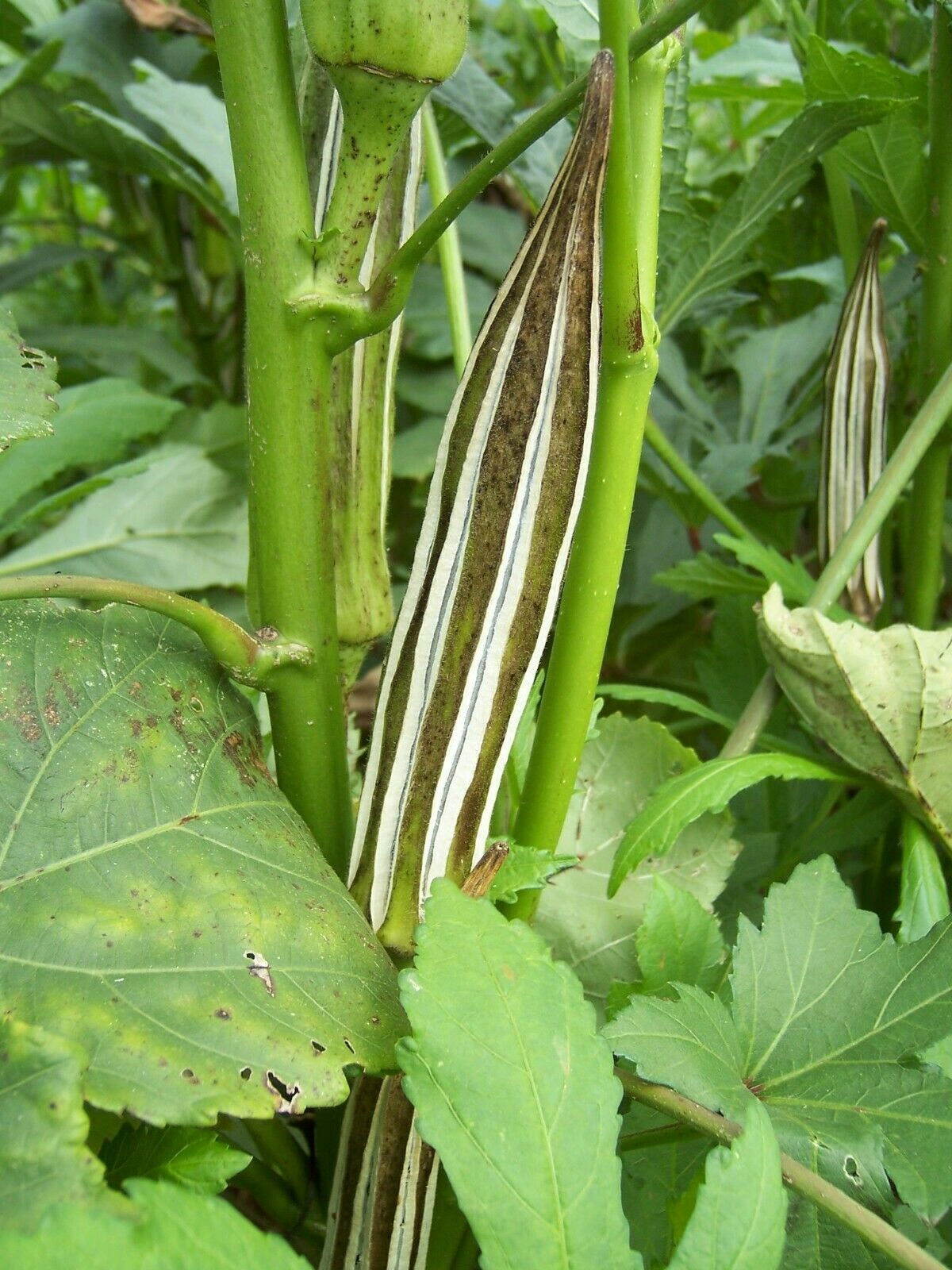Floridaseeds
Okra Abelmoschus esculentus 100 Seeds
Okra Abelmoschus esculentus 100 Seeds
Couldn't load pickup availability
Abelmoschus esculentus, commonly called okra, is native to tropical Africa and Asia. It is an annual that typically grows 3-5' tall. It is grown for harvest of its edible fruit/seed pods which are perhaps best noted as the signature ingredient in gumbo. Species plants feature hibiscus-like yellow flowers (to 2-3” wide) with purplish centers. Flowers last only for one day, but plants bloom freely throughout the growing season to frost. Flowers give way to fruit capsules which have a musky aroma, hence the common name. Hairy, dark green leaves are deeply cut into 3-7 lobes.
Annual that is easily grown in moist, moderately fertile, well-drained soils in full sun. Best flowering is in full sun. Thrives in hot summer climates. Seeds are sensitive to cold temperatures and should not be planted outside until soil temperatures have risen to 60 degree F. and night temperatures no longer dip below 55 degrees F. As an alternative, seed may be started indoors about 1-2 weeks prior to last frost date with seedling planted outside as soon as soils warm. Harvest the pods when they reach 3" long. First harvest of okra will occur about 55 days after seeds sprout. Seed may be harvested from garden plants for planting the following year.
Growing Instructions
1. Scarify the seeds by nicking or sanding the seed coat.
2. Soak the seed in water for several hours.
3. The seeds like moist, well-drained soil. Prepare a mixture of half potting soil and half sand, perlite or vermiculite. Put the soil in a pot. Water the mixture so that it is moist but not wet.
4. Put the seeds on the soil.
5. Cover the seeds with a thin layer of soil.
6. Water the seeds.
7. Place the pots in an area with warm temperatures in full sun or part shade.
8. When the seedlings are a few inches tall, they can be transplanted.










